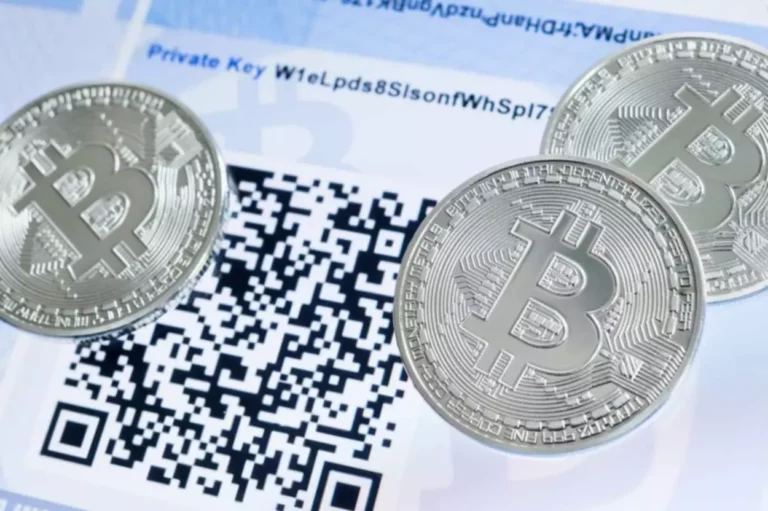Content
When a deal, involving a pool, gets done, the decentralized exchange market charges a 0.3% deal amount fee, and spreads this commission between all the pool’s members, proportionally to their share. This is how profit maximization on securing liquidity for the others takes place. If the provider wants to extract the invested assets back from the pool (including the interest received), they have to “burn” their LP https://www.xcritical.com/ tokens.
What are Liquidity Provision and Liquidity Pools?
While the free market principle is mainly positive for the global market, some crises happen outside of the pure market demand and supply changes. In some instances, the forex market deals with political tensions, natural disasters, social changes and other events that shouldn’t be viewed as an ordinary course of market activities. The type of pools that we’ve just talked about are used by the Uniswap protocol. There are many more open projects that kept on working on this technology and came up with the new work schemes for the pools. Buyers want to purchase the asset at the lowest possible price and the sellers, in their turn, liquidity provider vs market maker would like to sell at the maximum rate. For the deals to happen, the two parties must reach a “fair price” agreement.
Search code, repositories, users, issues, pull requests…
Their role contributes to price stability and ensures efficient order execution, making trading more seamless for participants. LedgerPrime is a cryptocurrency investment firm and one of the leading crypto liquidity providers in the industry. It offers options and derivatives trade with an aim to employ less volatile strategies for crypto investments.
How the Best Forex Liquidity Provider Operates
At the highest end, over 70% of early LPs of Arbitrum and Optimism hold more than 10 assets today. If we learned anything from the layer 1 bull market in 2021, it is that early adoption is not an indication of long-term success. Portals is a developer-focused DeFi API simplifying multi-chain Web3 application creation, enabling advanced DeFi operations with unified blockchain interaction… Sky.money is a non-custodial gateway to the decentralized Sky Protocol, offering access to features around the USDS stablecoin. As of January 2022, approximately 1.7 billion adults worldwide were estimated to be unbanked, according to data from the World Bank’s Global Findex database. In other words, close to one-quarter of the world’s population does not have an account with a financial institution.
In this article, we’ll examine the roles, differences, and impacts of liquidity providers and market makers. In parallel with the growth and development of the forex market, the role of liquidity providers is becoming increasingly vital in shaping its trajectory. From established giants to innovative newcomers, the top 10 liquidity providers of 2024 offer a diverse range of solutions to meet the evolving needs of Forex brokers and traders. By understanding their unique offerings and evaluating them against your business requirements, you can make informed decisions that propel your brokerage to new heights of success in trading.
In the last few years, the blockchain ecosystem has seen many notable layer 2 launches, all of which have competed for a finite pool of liquidity providers and their funds. A smart contract is a self-executing code riding on the decentralized, public ledger like Cardano. Every time a trade is executed within the pool, a transaction fee of 0.3% is charged to the sender. This fee is then distributed pro-rata among all liquidity providers (LPs) in the pool, rewarding them for their participation and incentivizing continued liquidity provision.

The liquidity pool is some kind of a storage, where the marketplace members keep their assets to cumulatively ensure a sufficient liquidity cushion for everyone willing to exchange this certain asset. Within a traditional financial system, the role of those pools is played by large banks, as they administer the assets of copious depositors and do even have the right to “print” additional money. The second cost to providing liquidity is the risk of Impermanent Loss (IL).
- One of the first projects to have introduced the liquidity pool concept was Bancor.
- In some instances, the forex market deals with political tensions, natural disasters, social changes and other events that shouldn’t be viewed as an ordinary course of market activities.
- Many DeFi platforms are able to offer attractive yields that far outpace their traditional financial counterparts– making them a safe and smart investment.
- The amount that a liquidity provider can withdraw from an AMM is based on the proportion of the AMM’s LP tokens they hold compared to the total number of LP tokens outstanding.
- So let’s get into covering measuring how much liquidity you’ll need and how to setup a liquidity pool for your token.
The basic liquidity pools, such as at Uniswap, are using the constant calculated by reproducing the quantity of both tokens within the pool. That is, the fewer A tokens there are left, the more expensive they get simultaneously making the B tokens’ price go down. Apparently, when somebody buys copious ETHs in the ETH/DAI pair, it diminishes the ETH pool and increases the DAI pool, which makes an instant impact on the exchange rate. The larger the pool gets in correlation to the amount of the deal, the less the deal impacts the price. The purpose of these pools is to provide access to market depth and liquidity, facilitating a continuous flow of buyers and sellers. It also ensures traders execute transactions faster and at fair, stable prices.
This type of assets includes stablecoins, in particular, such as USDT, TUSD, USDC, and others. The Curve pools work in accordance with a modified algorithm which is hyposensitive to every particular deal, thus leaving the exchange course relatively stable. The order book’s model issue has been bothering the cryptocurrency exchange community for a long time now.

In return, these LP’s are rewarded with fees generated by trades on that platform, which can be thought of as a form of passive income. This was often accelerated not only by the promise of fees earned from their respective pools but other incentives like the distribution of the protocol’s native tokens. These bonuses are offered to create maximum engagement and cushion liquidity providers against unintended losses.
Automated market makers (AMMs) are a type of decentralized exchange (DEX) that use algorithmic trading queues to make it easy for individual traders to buy and sell crypto assets. Instead of trading directly with other people as with a traditional order book, users trade directly through the AMM. Underpinning AMMs are liquidity pools, a crowdsourced collection of crypto assets that the AMM uses to trade with people buying or selling one of these assets. The users that deposit their assets to the pools are known as liquidity providers (LPs). Simply put, a liquidity pool is a smart contract where you can deposit tokens (Usually 2 tokens, equal amounts of each) in the hope of earning a return.
However, other projects might often want to add exchange as an additional feature to their offering. Alternatively, anyone can perform a special deposit to fund the AMM as if it were new. The XRP Ledger implements a geometric mean AMM with a weight parameter of 0.5, so it functions like a constant product market maker. For a detailed explanation of the constant product AMM formula and the economics of AMMs in general, see Kris Machowski’s Introduction to Automated Market Makers.
For a sizable portion of people on the planet, it’s not easy to obtain basic financial tools. Bank accounts, loans, insurance, and similar financial products may not be accessible for various reasons. EMURGO’s DeFi workshop is an excellent opportunity to mingle and learn with fellow finance and business professionals about the emerging world of DeFi and blockchain technology. These ledger entries are not owned by any account, so the reserve requirement does not apply to them. However, to prevent spam, the transaction to create an AMM has a special transaction cost that requires the sender to burn a larger than usual amount of XRP. While their offerings may be more limited, their concentrated service package is ideal for smaller businesses looking to succeed in the forex market.
If your token is held disproportionately by insiders, then outsiders will be wary of purchasing your token and becoming part of the movement. Because most of the tokens are out of their control and can be ‘dumped’ on the market, diluting them. There are ways around this with proper vesting and emissions schedule, but it’s definitely an issue to be aware of. Liquidity is what lets people become part of your project and importantly — utilize your token for whatever it enables. Having a well distributed token, will help your project get into enough of the right hands. Having this kind of distribution requires a good amount of liquidity for your token.
In the case of utility tokens, that’s rarely the case, so providing liquidity can be a risky financial instrument. Liquidity provision happens when a user deposits a cryptocurrency into a DeFi protocol, that allows other DeFi users the possibility to swap a pair of tokens on demand. By providing assets to a DeFi protocol, the original user is rewarded in the form of fees collected by the project at large. When selecting a crypto liquidity provider, several critical features should be taken into account. It’s essential to evaluate the provider’s track record, the variety of supported cryptocurrencies, and their commitment to maintaining a stable and efficient trading platform.


